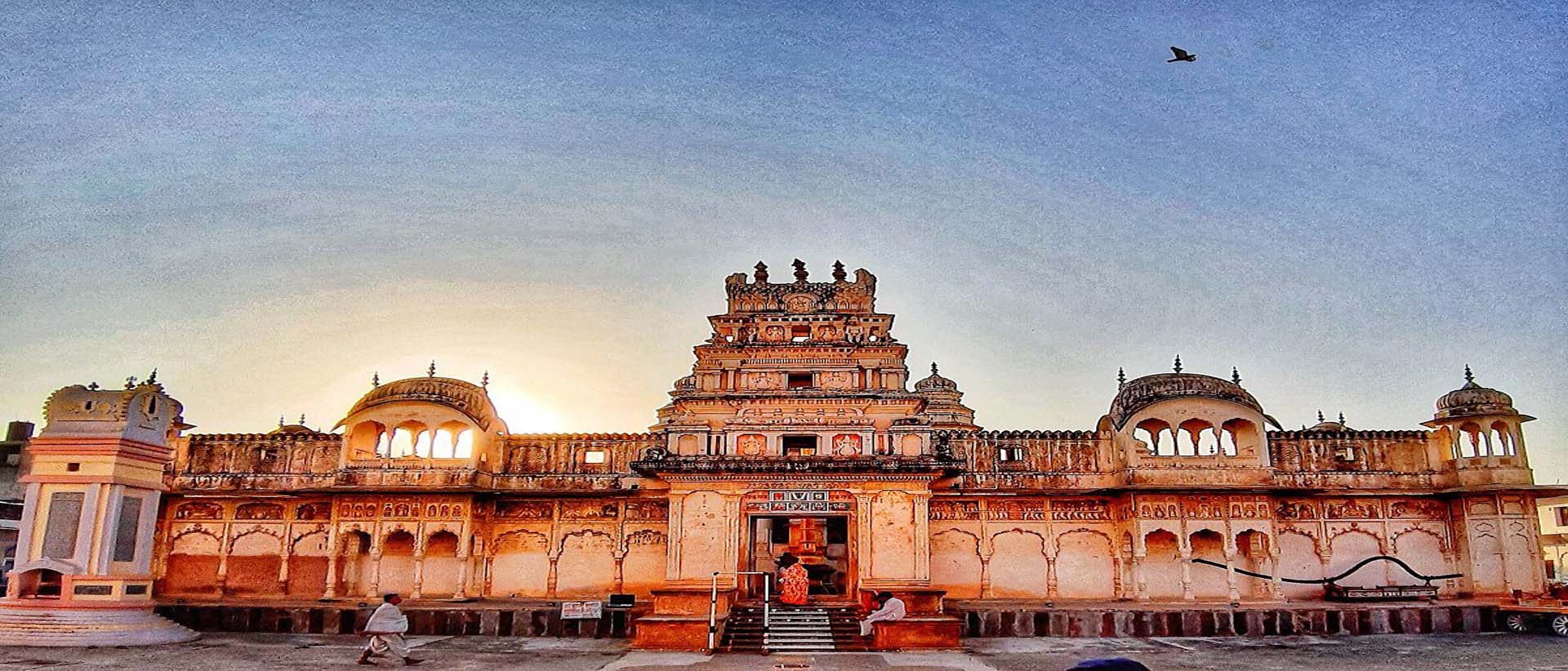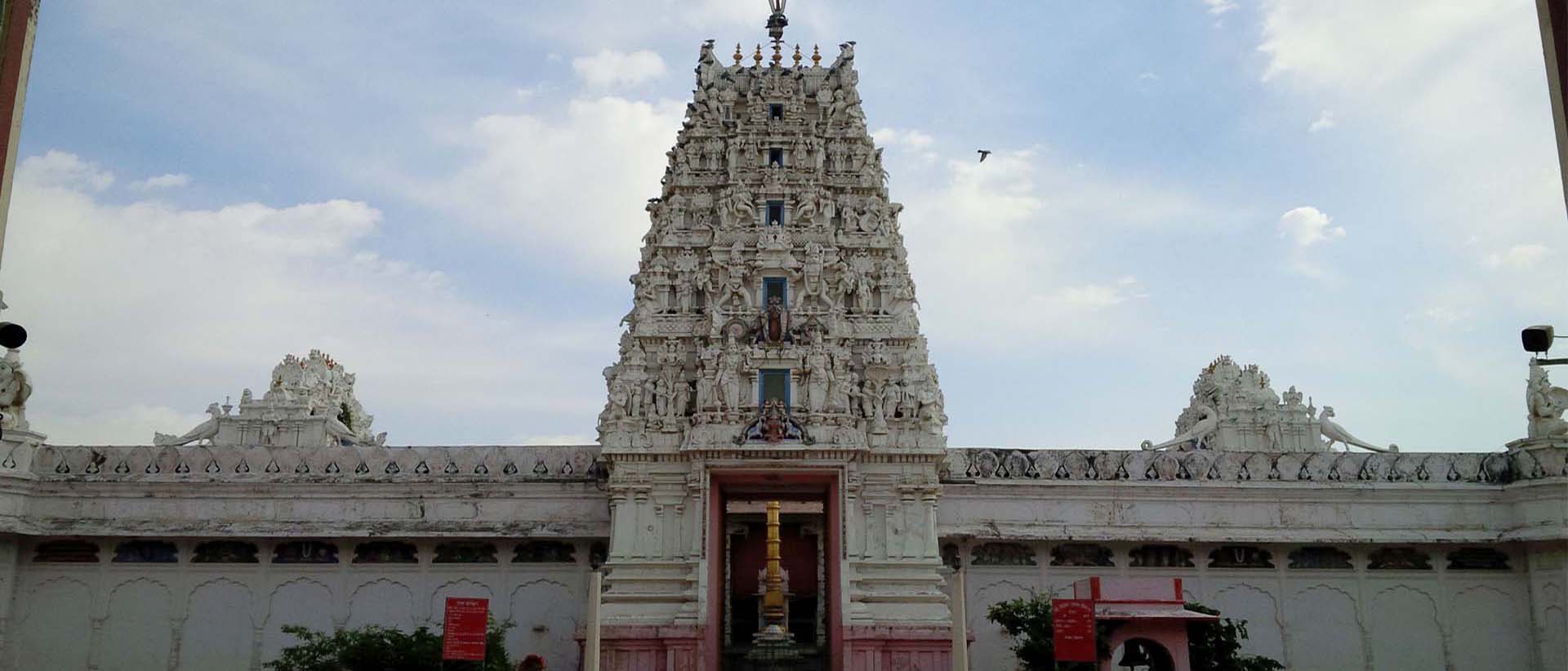Rangnath Temple Pushkar
Rangnath Temple Pushkar
This is the largest and the most imposing of the modern temples, and is situated at the entrance to the town of Pushkar. It belongs to the Shirveshnva sect of the hindus, which was founded by Shi Ramanujacharya who flourished in the 11th century of the Christian era. The Vaishnavas and the Saivas the worshippers of Vishnu and Shiva are the two principal sects to which most of hindu belong. Vaishnavism is divided into four sub-sects or Sampradayas –the Shri Vaishnava, the Vallabh, the Madhva and the Naibarak. The Shri Vaishnava Sampradaya was founded by Shi Ramanujacharya who was born in 1016 A.D. in Bhutpuri, Madras (Chennai) Presidency and preached in Shrirangam near Trichnopoly. Shrirangam is principal seat of this sect . The vallabh Sampradaya was founded by Vallabhacharya, and its chief seat now is Natha-dwara near Udaipur in Rajputana. Madhavacharya was the founder of Madahva Sampradaya, and its center now is in South India. The fourth Naibarak branch of the Vaishnavas originated in Northern India, and its chief seat is now Salemabad in the Kishangarh State in Rajasthan.
Old Rangnath Temple and New Rangnath Temple Pushkar
In Pushkar the two temples of the Ramanuja or Shri Vaishnava creed are (a) the temple of Sri Rama Vaikuntha and (b) the Rangji-ka-Mandir. The Sri Vashnava sampradaya is divided into three principal branches, according as they follow the Jayakhyam, the Satavata and the Paushkara Samhitas of the Panchratra, sacred literature of Vaishnavas. The Srirama Vaikuntha temple belongs to Jayakhyam; and the Rangji-ka-Mandir to the Paushkar sect. There are slight differences of ritual between the three branches of Ramanuja Vaishnavism, as well as in the outward marks on the foreheads of their followers, which distinguish them. But the real difference is that the Jayakhyam is the original and orthodox creed, and its ritual is wholly in Sanskrit, while the ritual of others is both Sanskrit and Tamil, as they attempted to reach the masses, who are all Tamil speaking people, while the Sanskrit is the language of the Pundits of Northern India. The srirama Vaikuntha follows the Jayakhyam Samhita, which according to its followers, was first preached by Bhagwan to Narad Muni, who in his turn recited it to five Rishis at Prabhaskshetra in the province of Gujrat.
The Viman of Gopuram over the inner temple of Srirama Vaikuntha was built in accordance with the rules architecture given in jayakhyam Samhita, as also the size and shape of idols. The idol in this temple is Paramurti, and the Rangji temple Vibhava. The viman is built of stone and contains signs of 361 gods or Devatas. In front of the inner temple or Nijmandir, stands the golden Garud Dhwaja Khambha, representing the garuda, the Vahan of Vishnu. In the early Mahotsava, this Dhwajkhambha is worshipped for ten days. One of the earliest mentions of Garud Dhwaja is to be found in the Bhilsa inscriptions of the second century A.D., which says, that a Garud Dhwaja was erected by Helliodoros, a Greek convert to Vaishnavism.
The outer Gopuram, built over the principal entrance of the temple is of brick and mortar, which admits of elaborate carving. This was also built and decorated by South Indian masons imported for the purpose. At the four corners of the temple, on the walls are placed four images of Garuda, to show that it is a Vaishnava temple.
The Srirama vaikuntha temple contains one principal temple called the Vaikuntha Venktesh, and eight other temples, (1) the Lakshmiji temple dedicated to the first wife of Bhagwan (2) the Godambaji, the second wife of Bhagwan (3) Raghunath ji (4) Srirangnath Bhagwan (5) Sudarshan Bhagwan, illustrating the Sudarshana Chakra of Bhagwan's forces (7) Ramanuj Mandir (8) Vedantdeshik, dedicated to the man who resuscitated strengthened the Ramanuja cult four hundred years after it was founded.


